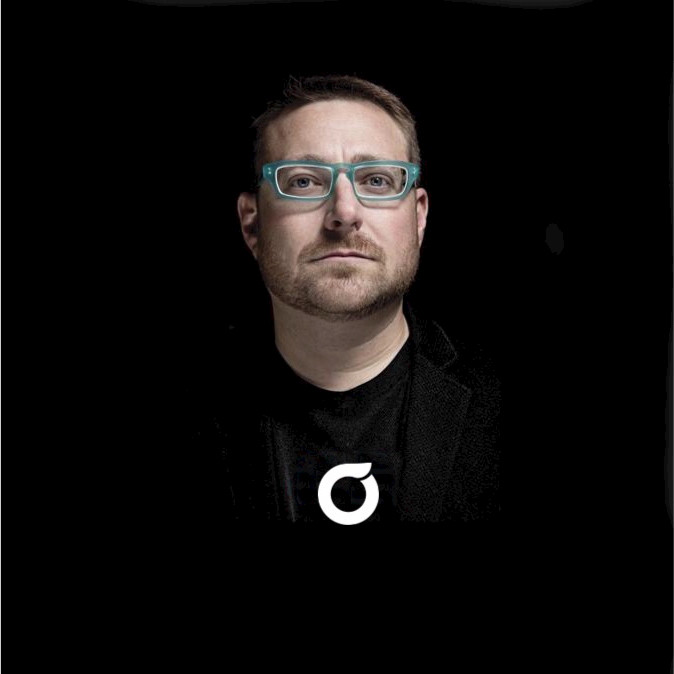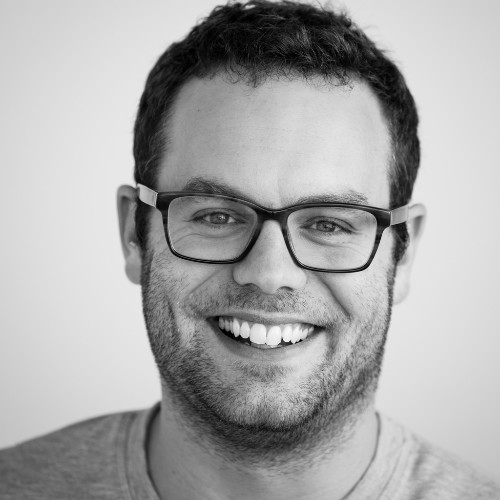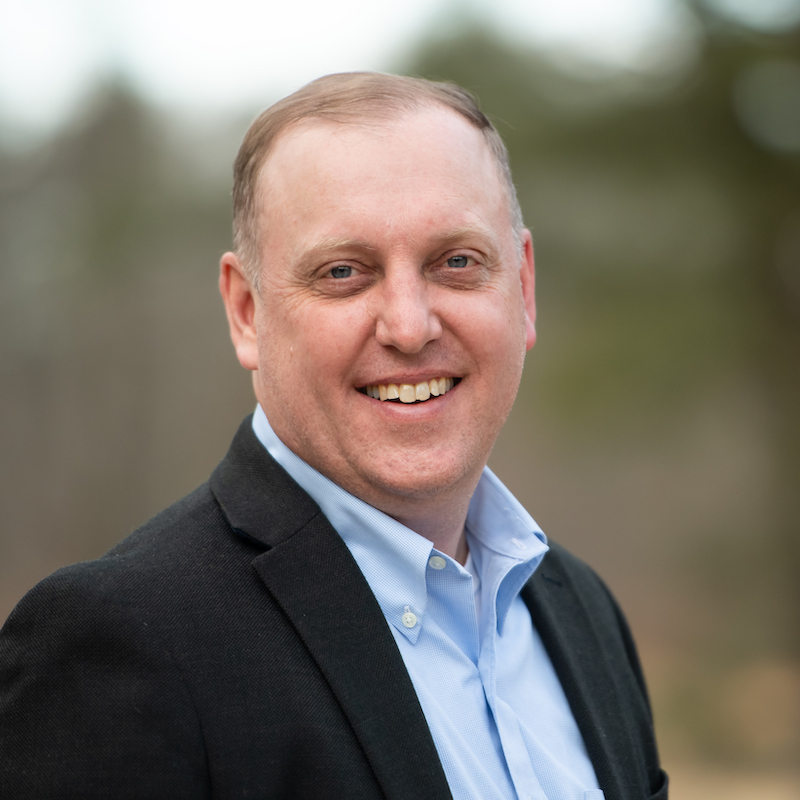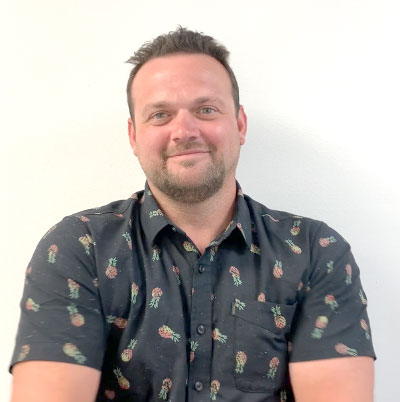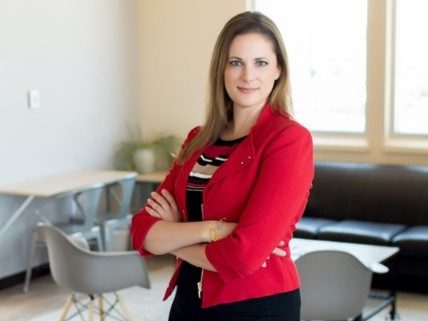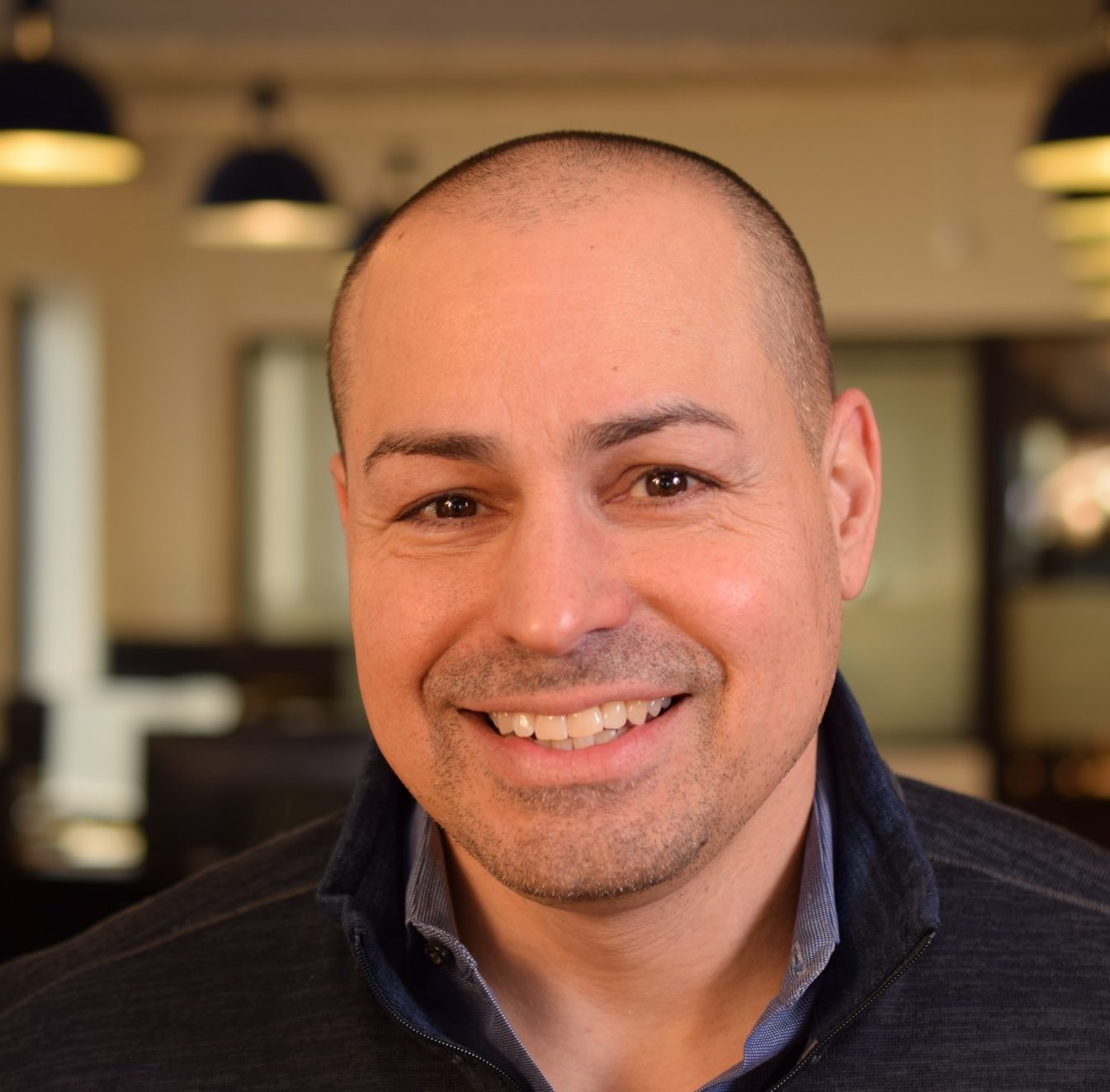Sean Lane is the founder of Olive, an healthcare AI product. He’s not only on the forefront of technology, he’s helping to redefine how we think about productivity.
Introducing humanpower
When machines were first introduced, there wasn’t a standard metric for how much work they could do. Eventually, the idea of horsepower was accepted. There was a certain amount of strength or work that a horse could do, and a machine could be measured in those units.
Sean thinks we can use the same model for measuring AI. We can use humanpower as a metric to determine how much work AI can do.
The new digital teams
AI gives us new categories of workers.
First is the regular human who works on their own without the aid of any technology.
Then comes the augmented human worker whose work output is increased as technology makes certain tasks easier.
Then there are AI workers. They work 24 hours a day and can perform high volume tasks to an exponential degree more than a regular worker.
New digital teams will find the right mix of these types of workers. In most cases, AI workers will do the heavy lifting while augmented humans will manage exceptions and provide thought services.
Providing a standard human productivity metric
Sean has also given a lot of thought to how a common productivity metric might change the way we hire and staff. Currently there’s no way for an applicant to show their productivity as compared to other people doing the same work. Sean and his colleagues are exploring the idea of an ergophenotype, or mapping the specific ways that people work and their relative differences in what they can accomplish.
Building an AI company by building the humans
Sean thinks one of the great ironies of his work is that in building a fantastic AI company, he spends a lot of time focused on the humans on his team. Humans are still the key to building something new. Sean said, “Most AI entrepreneurs would have given up a long time ago just based on the odds.”
Humans are essential to building a great company because they understand what it means to have faith in something that is improbable. They are creative in ways that AI hasn’t caught up to yet.
Sean likes to think about the idea of sacrifice–giving up your time for something better you get in return. This is a very human concept that is essential to knowing how to work with humans.
Building a different kind of company
When the pandemic hit, several things changed for Sean. He used to want to create a huge company with a huge building. But once everyone was home, he realized this was very much something for his own ego.
He started to wonder, “What if we valued flexibility above all else?”
Olive completely changed their working model and vocabulary. Now, people are either
“on the grid” (working) or “off the grid” (not working). It doesn’t matter where you are.
Olive still offers office locations (called substations) where people can work at if they are close to a client site or other people who work in the same location. But these substations are small and promote the idea of flexibility.
They’ve also leased several condos around the country where employees can go to get away, either to get a new scene or just to take some time away to recharge.
More from Sean Lane
Sean’s last words are essential to be able to navigate the future:
“Don’t be dogmatic. What you thought was reality is probably wrong.”
Today our guest is Sean Lane. He’s the CEO of Olive. Hi, Sean. How are you doing today?
Doing great. How are you, Neil?
I’m doing excellent. Sean, I’m excited to speak with you and to learn more about you. Why don’t you start off just telling us a little bit about yourself and what Olive is.
I’m the CEO of Olive. I founded the company in 2012. Prior to that, I was actually a military intelligence officer. I spent most of my career at NSA. I was on the technology side, but really great way to learn technology very, very quickly. Olive is a company that is building an AI workforce. We’re building an AI workforce for healthcare. The idea of an AI workforce is workers in healthcare have been plagued with systems that are old, antiquated, they don’t talk to each other, they’re not connected. A lot of humans spend an inordinate amount of time just processing and moving data from one system to the next, doing things that really AI workers can do very well. When we say AI workers, it’s software robots with varying levels of complexity and sophistication, sometimes using machine and deep learning, sometimes not, sometimes using optical character recognition, computer vision, whatever they need to do the job. These AI workers, they show up to work just like a human worker would. They take on tasks and they augment the staff inside of the health system, which is our focus. We’re focused on providing this AI workforce for health systems. Company is distributed, as I’m sure we’ll talk about, but we’ve got about 240 employees now.
We’ve talked about this before, but when you say 240 employees, you’re talking about humans working for you right now, right?
That’s right. We have 240 humans. We actually do track, I have an org chart that I get on a regular basis updated. And just this year, we added not only to track human workers, but also AI workers. So I believe our total, if you take the human power being generated by our AI workers and our human workers, it’s equivalent to about 1200 full-time employees.
There’s a lot of terms I want to unpack here. First off, just within the healthcare industry, how would you describe the difference between a human worker who’s just doing their job, an augmented worker who’s using technology to increase their output, and an AI worker? Break down those three terms for us.
The human worker as you know today, they are working on the systems they have been provided. They’re doing their jobs. There’s varying ideas around how many productive hours they have in a day, I think somewhere between 6.4, and the Bureau of Labor Statistics I think has it even lower, because they’re social creatures and there’s different things they do. So human workers show up, and in healthcare, there’s a large number, like 30% of everything that any human worker does is administrative, 25% of every worker’s full-time job is nothing but administrative work. And these are typically wrote processes that they’re doing the same thing every day, day in and day out. So that’s your typical human worker. The AI worker is a software robot that’s working unattended in the cloud and servers at night, sometimes during the day. They’re asynchronous. They’re logged into systems, just like a human worker would be, taking on these high volume tasks, getting through large numbers of workflows, could be things like checking insurance eligibility, processing claims, doing prior authorization for x rays and drugs, really a lot of the high volume stuff that is happening in healthcare today. And then in the middle is the combination of both of them, we call that cybernetics. And that is really where the human and the AI worker is working hand in hand. Our goal in that realm is to turn human workers into super human workers, this idea that you can, paired with an AI worker, you can increase productivity, increase efficiency, decrease errors, and really bring everybody to the same level from a performance perspective. So those are the three pieces. For us, we think of those three things as making up the total workforce of a system. So we have a total workforce concept, which is AI workers, human workers, and then the combination of AI and human workers together.
Now we’re always talking about productivity on the show. We’re learning about how we can measure productivity in other ways. You have a system, which you referred to earlier about human power, when it comes to it an equivalent being horsepower, like back in the day. Walk us through that concept.
When we started putting this AI workforce into existence, it was new concept. The idea of an AI workforce as augmenting the entire industry was new. And the question was, how do you measure it? How do you measure the output? It’s not as easy as one bot having the same output as one human. It’s very, very different because an AI worker may be able to produce a lot more output than a single human. And I look back in history and said, we’ve done this before, when the engine became commonplace, the combustion engine, the steam engine, Watt, who’s James Watt, the guy who created watts, as we know today, came up with this idea of something called horsepower. Horsepower was basically we knew what a horse could do, we knew the power that a horse could exert. So if we thought of engines and motors as the equivalent, any machine could do like eight horsepower worth of work, it made sense to us, we could reason about it. Today it’s like natural language. It’s part of everything we say. This car has 200 horsepower engine, that garage door opener is two horsepower, my garbage disposal is two horsepower, or I think that’s pretty high for a garbage disposal. But the point is we accept that as the way to measure an engine today and people generally understand it. So I thought wouldn’t it be interesting if we measured our machines or AI workers with human power, very similarly to what James Watt with horsepower. We said, let’s look at what a human can produce in a given day, in a given week, in a given year. And let’s create a number associated with that for whatever that AI worker can produce. One AI worker might be able to produce 20 human power. The way you calculate that is the time it takes a human to complete one circuit of work. So we call them circuits. From end to end, one complete loop of work, and then times the available hours they have in the day, and then you look at that compared to what the AI worker can do, and that’s how you get the human power. So right now we have 1700 human power every month that we generate, which is equivalent to about 4700 humans because you actually take the human power and you have to account for breaks and days off, and things like that. So it’s about 4700 humans worth of work is what Olive generates today.
So do you feel like when you’re explaining this to customers, is it something they immediately latch on to? Do you feel like you’re just talking about terms that maybe in 20 years will make sense? Or what do you feel like in terms of common people understanding it?
They look to us to define the future as it pertains to an AI workforce, because it’s very new for them. They know there’s certain concepts that they might not completely understand, but they know are going to be commonplace. And so they trust us to educate them on what we think is going to be the way of the future. So if we say, human power, you don’t have to really worry about it, but know that you’re going to hear about it a lot in the future. And you’re going to start to really assess the output of your AI workers on this new measurement. And we’re going to go ahead and tell you about it. We’re going to show you the measurements but you won’t probably hear about it in the market for a couple of years. And they accept that. And I think part of it, too, is defining those things. Somebody’s got to do it, somebody’s got to define it, somebody’s got to put it in place, put it in practice. For us, it’s extraordinarily valuable because we can see the growth of our AI workforce. And there’s a really distinct way to measure it.
So let’s say that this term catches on, people start talking about human power in the future, when they’re talking about, okay, here’s this model of this AI, it has X human power that’s there. How does that translate to the actual human? Like, if we take the equivalent to horses, like I don’t walk up and look at a horse and say, I wonder how much horsepower this has, because you know it just has one when you’re there. So when it comes to what humans should be doing, as we move into the future, as robots and systems start to do more things that humans used to do, and humans start to do more other tasks, should we start to look at other ways to measure human productivity as well?
I think that’s a great question. I think it’s really relative. The productivity of the human is relative to all the humans around them. There’s no real standard. We have two things, two concepts that we use to think about this. The first is computational ethnography. So ethnography is like the anthropological study of, in a lot of cases, work, how people were working. And computational ethnography is really looking at what they’re doing on their computers, on their information systems, like what are they clicking on? What applications are they using? How are they producing their work? So that is a pretty important thing that we think about. A second is a term that we came up with called ergo phenomics. So ergo meaning work, everybody knows that. And then phenomics is like phenotyping. So every human has an ergo phenotype. They have a way they work. And it’s the things they do. It’s the mixture of tasks they do, the way they do it, the tools they use, it’s all those things. It’s kind of like your DNA and that mixing with the way you interact with the world together, that creates your phenotype. The work that you do interacting with the systems that you use is your ergo phenotype. So we are on this quest to map the ergo phenom of the working world inside healthcare. If we can map how humans work relative to other humans, then we can figure out how to assist them the best way with AI.
Sean, you think about this way too much, I think. You’re pretty deep into it.
We’re pretty obsessed with it.
Sounds like it. It’s cool, though. I mean, think about the fact that, yeah, we’ve never had a measurement, like I can’t go to a job interview and say, hey, here’s my standard productivity output, which you’re going to be guaranteed if you hire me, we just haven’t created that because it’s been so difficult.
If you think about the future, like the ergo phenotype is a thing, you could say the phenotype when I was here at these jobs, and here’s similar ergo phenotypes and what they produce and you can see I maxed out. You could actually look at a human worker and say, oh, you’re a very efficient, productive human worker. Because it’s going to measure how you use your tools and how you interact with other humans. So it’s a very interesting concept.
Since you’re so deep into using tools, using AI and things, when you do your recruiting and hiring, are there certain skills that stand out to you as more important out of humans that you’re looking for when you’re bringing them into your company?
I think about it all the time. We hire so fast and we try to do the best job we can to make sure we have the right humans. The great paradox is, the key to building a great AI company is it’s all about the humans. And it’s all about getting the right humans. There’s a lot of things that humans can do or have the capacity to do that AI does not. Faith is one of them. Believing in something. Believing in this idea, having faith in the company or the vision or what you think it can do and the capacity to have faith in something, to believe that it’s possible, is something that is probably is improbable, like success of a startup, like taking a company from a standing start and turning it into a multibillion dollar company, improbable.
I feel like most AI entrepreneurs would have given up a long time ago because they realized this is useless, it’s never going to work.
Yeah, it’s too hard. Finding people with the capacity of faith is interesting because that’s a very human quality. Creativity is a somewhat human quality, creating things that never existed before. So we look for those things. But we look for people who want to be part of something. Another thing that is important that humans do is sacrifice. Humans trade their time for something they think is better. They’ll say like, I’m going to spend my time, eight hours or more of my day, doing this thing because I think the trade is worth it. Because I think whatever I’m getting in return, financial gain or more important mission is worth it. And so that’s another thing that we think about a lot.
Let’s talk a little bit more about your company, the actual reason we reached out to you was because you were talking about this idea of on the grid, off the grid, when it came to the concept of remote work. A lot of people have pushed back against that term of remote work. They want to redefine that and make sure people know exactly what we’re getting out of that. So walk us through what you’ve introduced at Olive in terms of how you handle distributed teams.
We, of course, were thrust into this world where we had to deal with the realities of a distributed workforce, just like everybody else during the global pandemic. So we had to do that. We had to figure out how to work in this setup. One of the things I thought about very quickly was, what do we do next? There’s not going to be like a signal, an alarm that goes off that says everybody back to your offices, back to your work.
Yeah, the drill is over.
Yeah, the drill is over, everybody return. So what I thought about, I’d never imagined that I would like this kind of distributed model. I never imagined that I would ever say that everybody didn’t have to be in one headquarters. I had these visions of this monolithic building and this skyline, the skyscraper with our name on it and 10,000 people working there. To me, like a CEO, you just have those visions, and a lot of it is this edifice that you want to create because of ego and who knows what. And I really started to just introspect and be like, there’s no good reason for wanting that. There’s no good reason for needing that. In fact, I think it’s the opposite. And we started to say, what if we were flexible, like just 100% flexible, and we allowed people to work from wherever they felt they could be the most productive. We didn’t say you had to work from home, but we also didn’t say you had to work in an office. And we started to think, what would it take to pull something like that off, and we thought, you got to name it something different. Like if you’re going to have an egalitarian setup here, where the remote worker is equal to the worker in an office, then you can’t call it remote because there’s a stigma associated with it. You can’t say you’re working from home because there’s a stigma associated with it. So we said, we’re going to change the vocabulary. So we called the plan the grid. So that’s what we use at Olive. It’s called the grid. And you’re either on the grid, or you’re off the grid. That’s it. There’s no other classification. It’s not like I’m at home. I’m on vacation. No, you’re on the grid or off the grid. You could be anywhere. You could be in a spaceship. You could be at a beach, you could be at a cabin, you could be at one of our substations, which is what we call our offices now. And we are going to put substations all around the country. For the folks if they would like to work in a substation, they’re welcome to, but they’re not required to. So flexibility is the name of the game here and so is lexicon or the way we’re talking about it. So I asked the team, I said, here’s our new plan. Please help me eradicate work from home as a term, and start using the terminology on the grid, off the grid. And my team is incredible. They adopted it immediately. They love it. They feel empowered, and it’s so flexible. It’s been incredible so far.
Talk more about the substation idea. Are these things that already exist? Or are you committed to building them? Are you going to rent out spaces? How are you going to build that out to where people that want an office to go to have that availability?
Yeah, so they’re going to be small. I think the days of monolithic offices are over, like they’re dead. Because monolithic offices are a global health risk. Look at like Facebook, Google or any of these with giant offices, they cannot bring people back to them. You can’t bring 10,000 people back to one building or 1,000. You can’t do it right now. It really creates a lot of inflexibility. So small is better. Small teams are fast, they’re agile. And if I have 30 offices of 10 people, it’s better than having one office of 300. Because I can turn them on and off when things happen around the world whenever I need to. So we’re going to use a few criteria to create a substation. Criteria one is that we have a major customer site there, we call them alpha sites. An alpha site is where we have engineers on site at a hospital. They are working with our customers to create their AI workforce. If we have one of those nearby, and it’s in an MSA, like a metropolitan service area, then it’s eligible for an alpha site. So long as we see one, we find it, we find the talent pool there, we can activate that and put a substation. We’re going to focus on the tech communities. So we’re going to look for the tech hub in a city, the place where all the tech companies come together and they have events and maybe there’s some co working space, and we’re going to plop right down the middle of that. That’s going to be our substation. First one we’re building right now in Baltimore. Then the second criteria is that anywhere 10 olivians gather, so olivians are what we call people who work at Olive. So if 10 olivians are in Omaha, and they say we’d love to have a substation, we will build a substation. So it can really be self directed by the olivians. Wherever they think they want to work, they show up, there’s 10, we build a substation. So it’s really interesting from that perspective, too, because people are now like saying we need like one more person in Chicago.
And has this expanded any at all to thinking about international hiring, broadening beyond these bases? Have you made plans for that at all?
Not yet, but I think it’s inevitable. I haven’t yet just because of focus and resources, but it’s possible and probable. We will become a global distributed workforce surely. I can’t imagine a future that we’re not a globally distributed workforce. And frankly, somebody could move to another country right now and be on the grid. So there’s nothing stopping that from happening today. I think one of the other things that we’re going to consider, we have a condo in Florida in Amelia Island that our employees can use whenever they like, and that thing is like booked solid now because people are just working there. So we’ll probably do more of that. We’ll probably open up these little like, rest pits if you will, places where people can go and get away and still be on the grid. And I think that’ll be an interesting perk. It’ll be something that we’ll see more companies do.
Sean, it’s been great talking with you. I love the fact that you’re the type of leader who’s asking that question of like, what if, why not, let’s try this out. You seem like your head is at least a good five years into the future trying to imagine where we can be, where we should be going to. So that’s a great place to be, it’s a great place to encourage others to get to. If you can give one bit of advice for other CEOs who are out there who are thinking about this, thinking about how to move themselves forward, what’s helpful for you as you try to keep your mind out there in the future?
Don’t be dogmatic. Don’t latch on to these ideas that you’ve had in your head for a long time. What you thought was reality is probably wrong. I mean, really question those things that you’ve thought are true for these maxims that you’ve held on to for a long time, question them. Be willing to flip them upside down. It’s pretty refreshing and it feels good to be wrong about things over the long arc of time. But being able to admit it and being able to accept the new reality is really cool. So that would be my advice.
I like that. It feels good to be wrong about things. I wish more people would take that approach. It’s good. Good, Sean, thanks so much for being on the show. If people want to learn more about you and your company, where should they go?
OliveAI.com. And my personal page is sllane.com, a lot of writings there. So either two of those, that’s a good place to start.
Excellent. Well, Sean, thanks so much. It’s been a blast and we hope to be in touch with you again soon.
Thanks a lot, Neil.
Sean Lane is the CEO and Founder of Olive, a healthcare AI company. Previously, we was a military intelligence officer.
